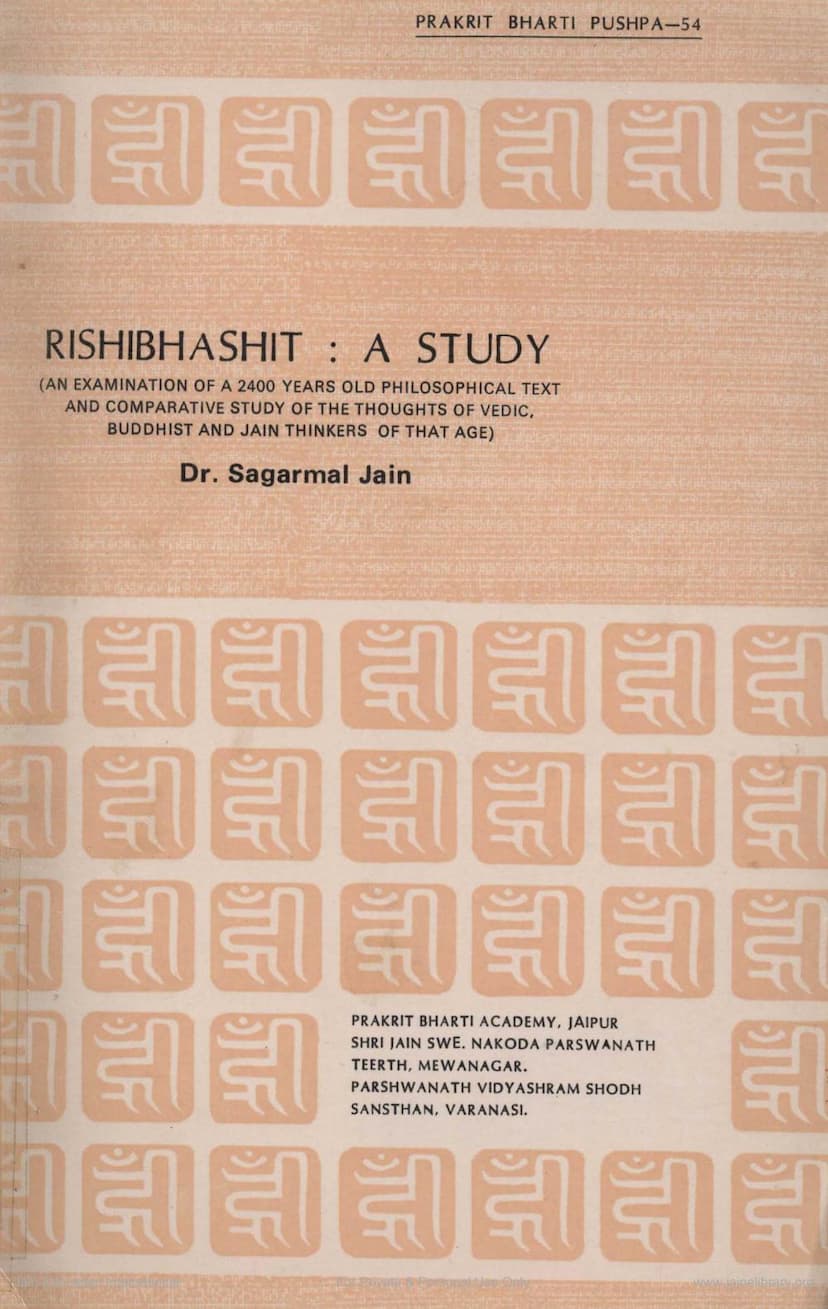Rishibhashit A Study
Added to library: September 2, 2025
Loading image...

Summary
This document is a comprehensive study of the Jain text Rishibhashit by Dr. Sagarmal Jain, exploring its place in Jain literature, its style and period, and the lives and teachings of the 45 sages mentioned within it. It also includes a comparative analysis of these teachings with those of Vedic, Buddhist, and other contemporary thinkers.
Key aspects of the study include:
- Place in Jain Literature: Rishibhashit is classified as a Prakeernaka (anthology) within Ardhamagadhi Jain canonical literature. While not universally included in all Jain traditions' canons, its inclusion in classifications like Kaliksutra and mentions in key works like Nandisutra and Pakkhisutra highlight its importance. The study notes its probable inclusion in the original Prashnavyakaran and its later separation, suggesting a deliberate effort to preserve its content while maintaining sectarian integrity.
- Style and Period: The language and style are identified as ancient Ardhamagadhi, placing Rishibhashit as one of the oldest Jain canonical works. Its period is estimated to be slightly later than the first Shrutaskandha of Acharanga but earlier than Sutrakritang, Uttaradhyayan, and Dashvaikalika. The text predates the institutionalization of Jainism and exhibits remarkable religious tolerance by revering Rishis from Vedic, Buddhist, and Jain traditions without discrimination.
- Authenticity of Concepts: The study finds that the teachings of the Rishis in Rishibhashit are generally presented authentically, often reflecting core principles of Jainism such as Panch Mahavrat, Kashaya, and Karma. However, it also suggests that some concepts considered uniquely Jain might have originated from other traditions and were later integrated into Jainism.
- Historical Background of the Rishis: The study meticulously analyzes the historical context and traditions of each of the 45 Rishis mentioned. It identifies many as prominent figures from Vedic (e.g., Narad, Yajnavalkya, Uddalak) and Buddhist (e.g., Mahakashyap, Sariputra, Vajjiputta) traditions, alongside Jain figures like Parshwa and Vardhaman (Mahavir). It also acknowledges figures whose historical existence is less certain or primarily mythological but whose inclusion signifies the broad scope of spiritual thought recognized by the text.
- Comparative Study: A significant portion of the study is dedicated to comparing the preachings of the Rishis with their representations in other religious and philosophical traditions. This comparative approach helps in establishing the authenticity of the teachings and understanding the intellectual landscape of ancient India.
- Rishibhashit and Religious Tolerance: A central theme is the remarkable religious tolerance and assimilative nature of Rishibhashit. It stands out for its respectful inclusion of diverse spiritual thinkers, reflecting a period when sectarian divisions were less pronounced. This tolerance is contrasted with later sectarian developments in Jain and Buddhist traditions.
- Language and Textual Analysis: The study highlights the ancient Ardhamagadhi language of Rishibhashit, noting its minimal influence from Maharashtri Prakrit compared to other Jain canonical works. It also touches upon textual variations and the need for re-editing original texts to preserve linguistic antiquity.
- Niryukti and Rishimandal: The study discusses the possible existence and influence of Rishibhashit Niryukti and Rishimandal literature, suggesting that Rishimandal might contain elements derived from an earlier Niryukti on Rishibhashit.
- Conclusion: The study concludes that Rishibhashit is a pivotal work in Prakrit literature, valuable for its antiquity, historical insights into ancient sages, and its embodiment of Indian religious tolerance and assimilation. It calls for further scholarly attention to fully appreciate its contribution to Indian spiritual thought and its role in understanding the absorption of ideas by the Jain tradition.
In essence, this study presents Rishibhashit as a foundational Jain text that bridges different philosophical and religious traditions of ancient India, showcasing a period of significant intellectual and spiritual cross-pollination.